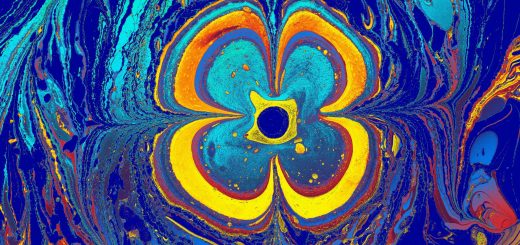Renenutet: Snake Goddess of Nourishment

Before diving in, please note: This post is for informational purposes only. If you’d like to know more about how we approach topics, feel free to check out our friendly Disclaimer Page.
Hey there, amazing readers! 🖐️ Just a quick note: yes, we know there are a lot of ads here. Trust us, we get it—it’s not the prettiest look, but they help us keep this blog alive and kicking. Those pesky little ads cover the costs of all the behind-the-scenes magic, from hosting and tech stuff to creating content we hope you’ll love.
We’re committed to delivering quality posts, and your support (even just sticking around despite the ads) means everything to us. So, bear with us, and thanks for helping us keep the good vibes rolling. Now, on to the fun stuff! 😉
TRANSLATE BUTTON AT THE END OF THE ARTICLE
A Quick Overview
Renenutet, the Snake Goddess of Nourishment, was a prominent deity in ancient Egyptian mythology.
She was believed to be the protector of the harvest, fertility, and nourishment.
Renenutet was often depicted as a snake or as a woman with the head of a snake.
Her role in Egyptian culture was crucial, as she was responsible for ensuring the prosperity and abundance of the land.
In this article, we will delve into the origins, symbolism, worship, and significance of Renenutet in ancient Egypt.
Origins and Depiction of Renenutet
Renenutet was a goddess whose origins can be traced back to the Early Dynastic Period of ancient Egypt.
She was often depicted as a woman with the head of a cobra or as a full serpent.
Renenutet was associated with the harvest, fertility, and nourishment, making her a crucial figure in Egyptian mythology.
Her image symbolized protection, growth, and abundance, which were essential aspects of Egyptian life.
Symbolism of Renenutet in Ancient Egypt
In ancient Egyptian culture, Renenutet symbolized fertility, protection, and nourishment.
As the goddess of the harvest, she was believed to ensure the success of agricultural endeavors and the prosperity of the land.
Renenutet was also associated with rebirth and regeneration, reflecting the cyclical nature of life and the importance of sustenance.
Her association with snakes further emphasized her role as a protective deity, safeguarding against harm and ensuring the well-being of the people.
Renenutet’s Role in Fertility and Agriculture
Renenutet played a crucial role in ensuring fertility and abundance in ancient Egypt.
Farmers and agricultural workers often invoked her blessings for a bountiful harvest and successful cultivation.
As the goddess of nourishment, Renenutet was believed to provide sustenance to the people and ensure the prosperity of the land.
Her presence was essential in maintaining the balance of nature and ensuring the continuity of life through the cycles of planting, growth, and harvest.
Offerings and Worship of Renenutet
Ancient Egyptians worshipped Renenutet through offerings and rituals aimed at honoring her role as the goddess of nourishment.
Offerings of food, particularly grains and fruits, were made to appease her and seek her favor for a successful harvest.
Priests dedicated ceremonies and festivals to Renenutet, performing rituals to ensure her protection and blessings upon the land.
Her worship was integral to the agricultural practices of ancient Egypt, as she was believed to hold the key to abundance and sustenance.
Renenutet in Egyptian Mythology
In Egyptian mythology, Renenutet was closely associated with the concept of Ma’at, the principle of harmony, balance, and truth.
As a goddess of nourishment, she embodied the ideals of order and fertility, ensuring the prosperity and well-being of the land.
Renenutet’s presence in mythological narratives highlighted the importance of sustenance and growth in the cycles of life, death, and rebirth.
She was revered as a protective deity, guarding against famine, drought, and other threats to the agricultural livelihood of the people.
Renenutet’s Connection to Other Deities
Renenutet was often linked to other deities in the Egyptian pantheon, such as Isis, Osiris, and Hathor.
She shared associations with fertility, rebirth, and protection, aligning her with these powerful figures in Egyptian mythology.
Renenutet’s connection to the divine hierarchy reflected her importance in the cosmic order of the ancient Egyptian worldview.
She collaborated with other gods and goddesses to ensure the prosperity and abundance of the land, working in harmony with the pantheon to maintain the balance of nature.
Temples and Shrines Dedicated to Renenutet
Throughout ancient Egypt, temples and shrines were dedicated to Renenutet to honor her role as the Snake Goddess of Nourishment.
These sacred sites served as centers of worship and ritual, where priests and devotees paid homage to the goddess through offerings and ceremonies.
The most notable temple dedicated to Renenutet was located in the city of Medinet Habu, where elaborate rituals were performed to seek her blessings for the harvest and fertility.
These temples and shrines were integral to the religious practices of ancient Egyptians, as they provided a space for spiritual connection and reverence for the divine.
Renenutet’s Influence on Daily Life
Renenutet’s influence extended beyond the realm of mythology and religion, impacting the daily lives of ancient Egyptians.
Farmers and agricultural workers relied on her protection and blessings for a successful harvest, while families sought her guidance for nourishment and sustenance.
Renenutet’s presence in the agricultural cycle dictated the prosperity of the land and the well-being of the people, emphasizing the importance of fertility and abundance in Egyptian society.
Her role as the Snake Goddess of Nourishment permeated all aspects of daily life, highlighting the interconnectedness of humans, nature, and the divine.
Modern Interpretations of Renenutet
In modern times, Renenutet continues to inspire artists, scholars, and enthusiasts interested in ancient Egyptian mythology and culture.
Her depiction as the Snake Goddess of Nourishment symbolizes the enduring relevance of fertility, protection, and abundance in human society.
Renenutet’s legacy as a powerful deity associated with the harvest and nourishment resonates with contemporary interpretations of nature, sustainability, and spirituality.
Her image serves as a reminder of the interconnectedness of life, highlighting the importance of balance and harmony in the cycles of growth and renewal.
Renenutet’s Legacy in Egyptian Culture
Renenutet’s legacy in Egyptian culture endures as a symbol of fertility, protection, and nourishment.
Her presence in mythology, religion, and daily life reflects the fundamental values of ancient Egyptian society, emphasizing the importance of sustenance and prosperity.
Renenutet’s influence on agriculture, fertility, and the cycles of nature has left a lasting impact on Egyptian culture, shaping beliefs, rituals, and traditions related to the land and its abundance.
Her role as the Snake Goddess of Nourishment continues to be celebrated and revered as a testament to the enduring legacy of ancient Egyptian deities.
Significance of Renenutet in Ancient Egypt
Renenutet held significant importance in ancient Egypt as the Snake Goddess of Nourishment.
Her role in ensuring fertility, protection, and abundance made her a vital deity in the pantheon of gods and goddesses.
Renenutet’s symbolism as a protector of the harvest and provider of nourishment underscored the essential connection between humans, nature, and the divine.
Her influence on daily life, agriculture, and mythology exemplified the central role of fertility and sustenance in Egyptian culture, highlighting the enduring significance of Renenutet as a powerful and benevolent deity in the ancient Egyptian worldview.
Conclusion
Renenutet, the Snake Goddess of Nourishment, played a crucial role in ancient Egyptian mythology, symbolizing fertility, protection, and abundance.
Her origins, symbolism, worship, and legacy highlighted the importance of sustenance and prosperity in Egyptian culture.
Renenutet’s influence on agriculture, fertility, and daily life underscored the interconnectedness of humans, nature, and the divine, emphasizing the enduring significance of the Snake Goddess of Nourishment in ancient Egypt.
Her legacy continues to inspire admiration and reverence for the cycles of growth, renewal, and abundance in the natural world.

The Enlightenment Journey is a remarkable collection of writings authored by a distinguished group of experts in the fields of spirituality, new age, and esoteric knowledge.
This anthology features a diverse assembly of well-experienced authors who bring their profound insights and credible perspectives to the forefront.
Each contributor possesses a wealth of knowledge and wisdom, making them authorities in their respective domains.
Together, they offer readers a transformative journey into the realms of spiritual growth, self-discovery, and esoteric enlightenment.
The Enlightenment Journey is a testament to the collective expertise of these luminaries, providing readers with a rich tapestry of ideas and information to illuminate their spiritual path.
Our Diverse Expertise 🌟
While our primary focus is on spirituality and esotericism, we are equally passionate about exploring a wide range of other topics and niches 🌍📚. Our experienced team is dedicated to delivering high-quality, informative content across various subjects ✨.
To ensure we provide the most accurate and valuable insights, we collaborate with trusted experts in their respective domains 🧑🏫👩🏫. This allows us to offer well-rounded perspectives and knowledge to our readers.
Our blog originally focused on spirituality and metaphysics, but we’ve since expanded to cover a wide range of niches. Don’t worry—we continue to publish a lot of articles on spirituality! Frequently visit our blog to explore our diverse content and stay tuned for more insightful reads.





